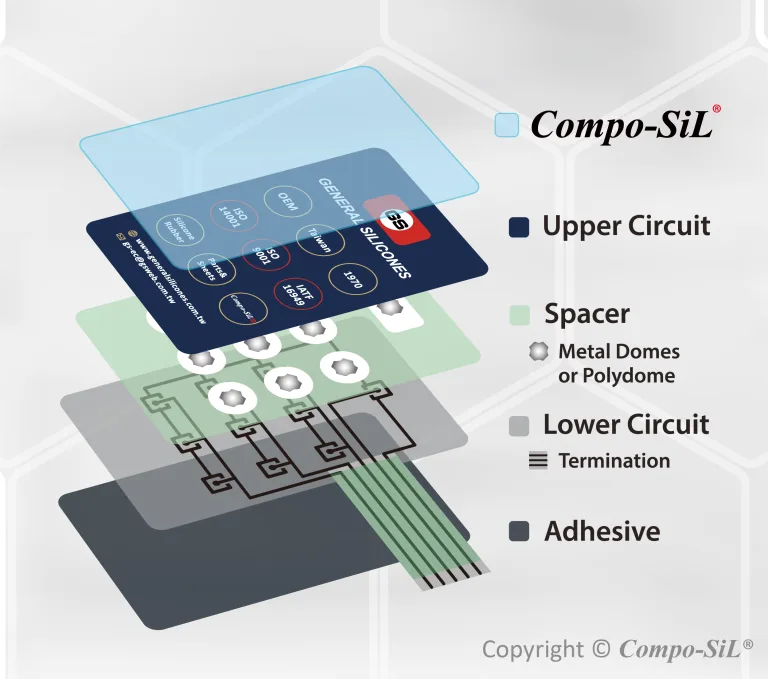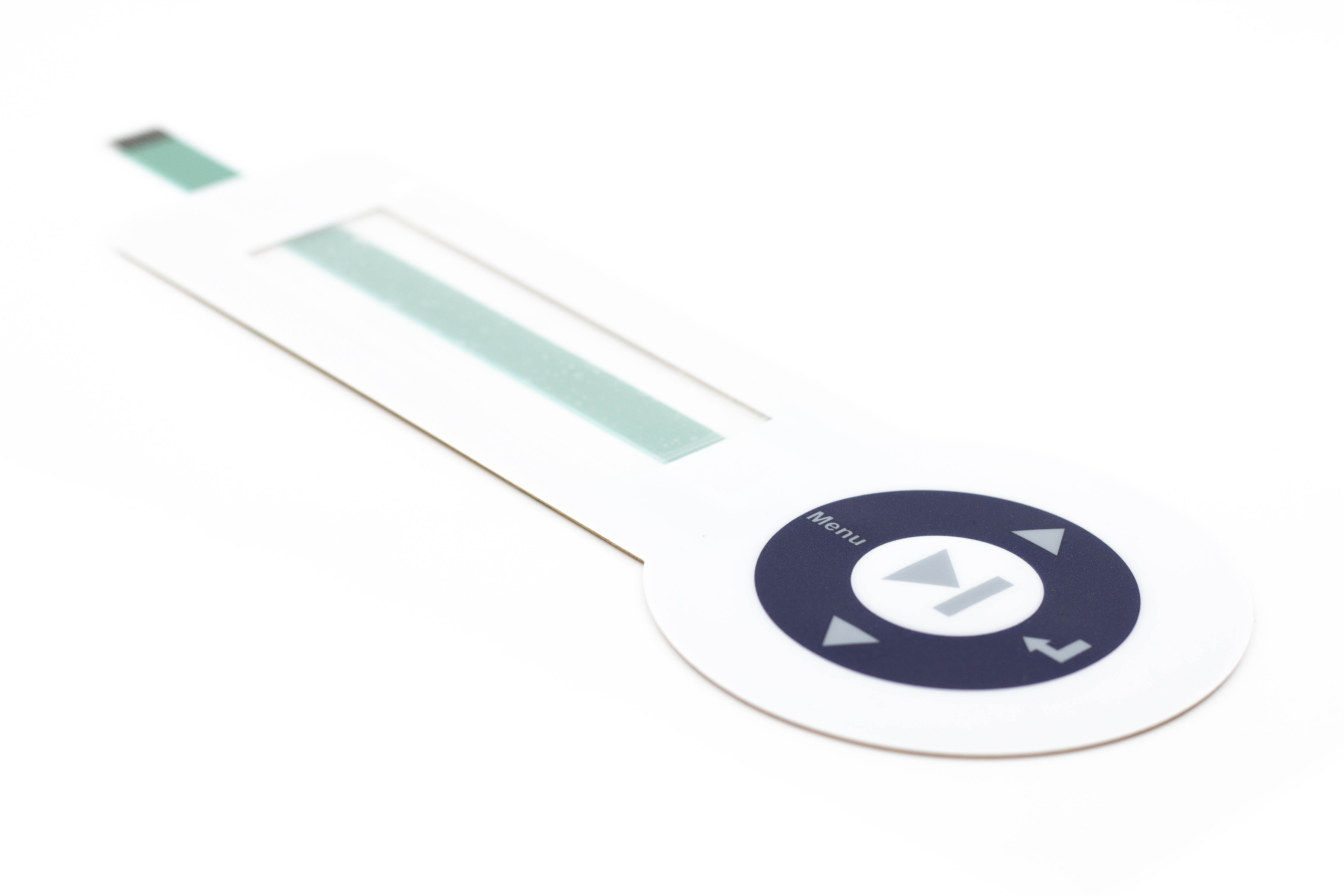Why Membrane Switches Are a Reputable Choice for Interface Solutions
Why Membrane Switches Are a Reputable Choice for Interface Solutions
Blog Article
The Ultimate Resource on Membrane Switches Over: Layout, Capability, and Applications
Membrane layer switches over act as a fascinating crossway of design and performance, playing an essential function in modern interface across different industries. This resource unpacks the vital parts that add to their effectiveness, including graphic overlays and circuit traces, while additionally clarifying the devices behind their pressure activation. As we check out the varied applications of membrane buttons, it comes to be apparent that their versatility and sturdiness are crucial in environments varying from healthcare to customer electronic devices. However, the subtleties of their style and functional principles may expose also much deeper understandings worth taking into consideration.

Comprehending Membrane Layer Buttons
Membrane layer buttons are a sort of interface modern technology extensively used in numerous electronic devices, identified by their slim, adaptable layout and functionality. These buttons are composed of multiple layers that include graphic overlays, glue layers, and circuitry, enabling a small and efficient interface for users. They can be located in appliances, clinical gadgets, and industrial control panels, supplying a reliable method for user communication.
Among the primary advantages of membrane layer switches is their capability to resist impurities such as dirt and moisture, making them ideal for settings where toughness is important. Their inconspicuous design permits seamless combination into various applications, while the personalized visuals overlays enhance user experience by supplying clear aesthetic comments. Furthermore, membrane layer buttons can suit a variety of modern technologies, such as tactile responses and backlighting, more improving their use.
The production process for membrane layer switches typically entails screen lamination, printing, and die-cutting strategies, making sure precision and uniformity in production. On the whole, membrane layer switches stand for a versatile and effective option for modern-day digital devices, combining capability with aesthetic charm in individual interface style.
Secret Components and Layout Aspects
A range of essential parts and design components come together to produce a reliable membrane button. At the core, the graphic overlay serves both aesthetic and practical purposes, using an easy to use user interface while safeguarding internal elements from environmental variables. The choice of products, generally polyester or polycarbonate, affects durability and tactile comments.
Under the overlay, the adhesive layer ensures the switch sticks firmly to the substratum, which can be steel, plastic, or glass. The spacer layer is vital, as it preserves the required space between the overlay and the circuit layers, allowing for reliable actuation. Membrane Switches. Circuit traces, generally made from conductive ink or adhesive, are published on a versatile substratum, enabling electrical signals to be sent when pressure is applied
Design considerations likewise consist of the plan of tactile domes or embossing that supply physical comments to the customer, enhancing the total experience. Additionally, the layout and spacing of the buttons should be maximized for convenience of usage, guaranteeing that customers can browse the user interface without effort. Generally, these elements and style components function synergistically to create a trusted, useful membrane switch tailored to specific applications.
Capability and Procedure Mechanism
At the heart of reliable capability for membrane layer switches over exists their functional device, which assists in customer interaction with a straightforward yet reliable layout. These switches operate the concept of stress activation, where a customer applies force to an assigned area of the button (Membrane Switches). This activity presses the layers of the switch, completing an electric circuit that sends a signal to the connected gadget
The building and construction commonly consists of a top visuals layer, Clicking Here an adhesive spacer layer, and a lower circuit layer, which jointly form a robust user interface. When stress is used, the top layer falls down versus the lower circuit layer, allowing conductive traces to connect. This design not only allows clear tactile comments yet also ensures sturdiness and integrity, as the buttons are usually immune to dirt and dampness.
In addition, the convenience of membrane layer switches over permits assimilation with numerous innovations, including LED indications and microcontrollers, enhancing their performance. By offering a streamlined user interface that lessens mechanical wear, membrane layer changes continue to be a favored selection in applications varying from customer electronics to commercial equipment, making certain ideal performance and individual contentment throughout varied atmospheres.
Types of Membrane Layer Switches

An additional significant category is lit up membrane buttons, which include backlighting to improve exposure in low-light conditions. These switches are usually used in control panels and control panels where clear visibility is vital.
Additionally, there are personalized membrane switches over designed to meet details dimensional, visual, and functional requirements. These modifications can consist of special shapes, shades, and designs, permitting for smooth assimilation right into different devices.

Applications Across Different Industries
How do membrane layer switches improve capability throughout diverse markets? These versatile components are essential to numerous applications, delivering structured interface and robust performance. In the medical industry, membrane switches play an essential role in gadgets such as diagnostic equipment and patient tracking systems, where reliability and ease of cleansing are critical. Their ability to stand up to harsh atmospheres makes them perfect for laboratory instruments and surgical gadgets.
In the vehicle market, membrane switches are generally made use of in dashboards and control panels, supplying user-friendly controls that enhance motorist security and comfort. The consumer electronic devices market likewise gains from their lightweight and customizable attributes, allowing sleek layouts for smart devices and home devices.
Moreover, membrane buttons locate applications in commercial automation, where they add to effective equipment operation and monitoring systems. Their resistance to dust and moisture makes certain capability in requiring conditions (Membrane Switches). Furthermore, the food and drink sector employs membrane layer switches for equipment control, where hygiene and toughness are essential
Final Thought
Finally, membrane switches over represent an important innovation in user interface technology, characterized by their unique design and performance. Their key elements, consisting of graphic overlays and circuit traces, add to their functional performance through pressure activation. The convenience of membrane switches promotes their application throughout diverse industries, from medical devices to consumer electronic devices. This comprehensive understanding reinforces the importance of membrane switches in boosting item use and sturdiness in modern technological atmospheres.
Membrane switches over offer as an appealing crossway of style and performance, playing a critical function in contemporary user interfaces throughout different markets.Membrane buttons are a type of customer interface technology widely utilized in different digital tools, identified by their slim, flexible style and functionality.At the heart of effective capability for membrane changes lies their operational system, which promotes individual communication through a basic yet efficient style. These buttons operate on the principle of stress activation, where a user applies pressure to an assigned area of the button.In conclusion, membrane switches over represent an important advancement in individual interface innovation, characterized by their distinct design and functionality.
Report this page